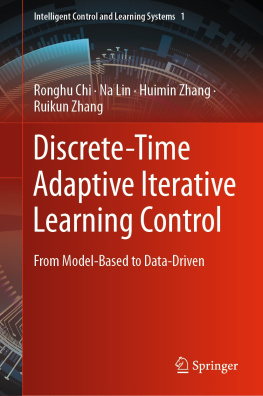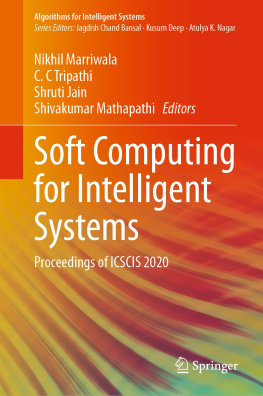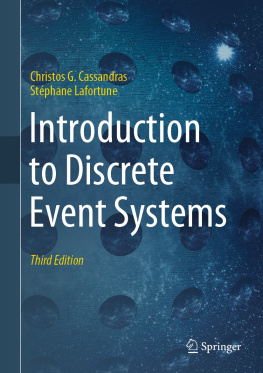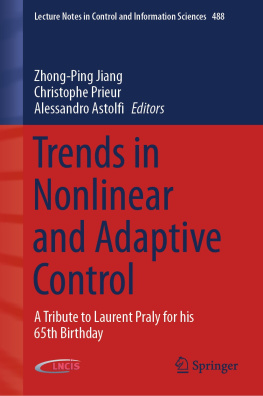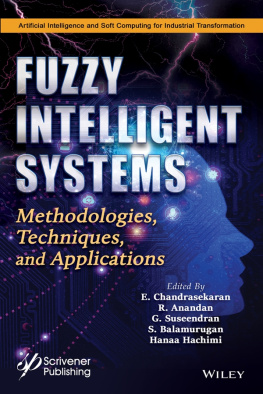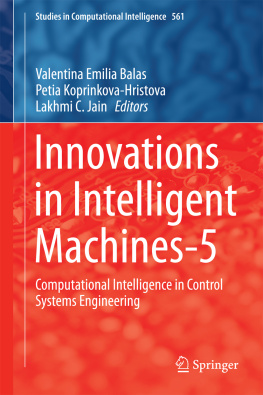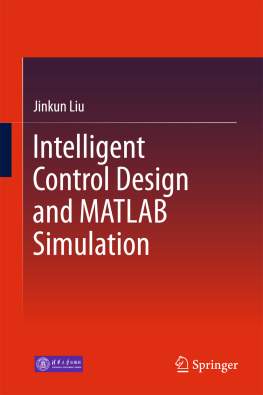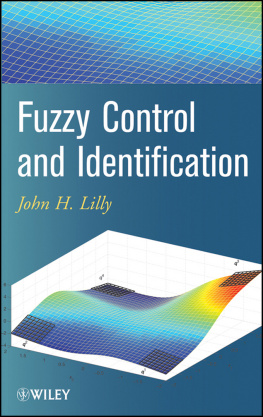Jiang Y. - A Review of Fuzzy Logic and Neural Network Based Intelligent Control Design for Discrete-Time Systems
Here you can read online Jiang Y. - A Review of Fuzzy Logic and Neural Network Based Intelligent Control Design for Discrete-Time Systems full text of the book (entire story) in english for free. Download pdf and epub, get meaning, cover and reviews about this ebook. genre: Science. Description of the work, (preface) as well as reviews are available. Best literature library LitArk.com created for fans of good reading and offers a wide selection of genres:
Romance novel
Science fiction
Adventure
Detective
Science
History
Home and family
Prose
Art
Politics
Computer
Non-fiction
Religion
Business
Children
Humor
Choose a favorite category and find really read worthwhile books. Enjoy immersion in the world of imagination, feel the emotions of the characters or learn something new for yourself, make an fascinating discovery.

A Review of Fuzzy Logic and Neural Network Based Intelligent Control Design for Discrete-Time Systems: summary, description and annotation
We offer to read an annotation, description, summary or preface (depends on what the author of the book "A Review of Fuzzy Logic and Neural Network Based Intelligent Control Design for Discrete-Time Systems" wrote himself). If you haven't found the necessary information about the book — write in the comments, we will try to find it.
Chenguang Yang. Zienkiewicz Centre for Computational Engineering, Swansea University, Swansea, UK.
Hongbin Ma. State Key Lab of Intelligent Control and Decision of Complex Systems, Beijing Institute of Technology, Beijing, China].Received 5 November 2015; Accepted 29 December 2015
Academic Editor: Juan R. TorregrosaCopyright 2016 Yiming Jiang et al. This is an open access article distributed under the Creative Commons Attribution License, which permits unrestricted use, distribution, and reproduction in any medium, provided the original work is properly cited.Abstract.
Over the last few decades, the intelligent control methods such as fuzzy logic control (FLC) and neural network (NN) control have been successfully used in various applications. The rapid development of digital computer based control systems requires control signals to be calculated in a digital or discrete-time form. In this background, the intelligent control methods developed for discrete-time systems have drawn great attentions. This survey aims to present a summary of the state of the art of the design of FLC and NN-based intelligent control for discrete-time systems. For discrete-time FLC systems, numerous remarkable design approaches are introduced and a series of efficient methods to deal with the robustness, stability, and time delay of FLC discrete-time systems are recommended. Techniques for NN-based intelligent control for discrete-time systems, such as adaptive methods and adaptive dynamic programming approaches, are also reviewed. Overall, this paper is devoted to make a brief summary for recent progresses in FLC and NN-based intelligent control design for discrete-time systems as well as to present our thoughts and considerations of recent trends and potential research directions in this area.Introduction.
Fuzzy Logic Control for Discrete-Time Systems.
Adaptive FLC of Discrete-Time Systems.
Robustness Issue in Discrete-Time Fuzzy Control.
Stability Issue in Discrete-Time Fuzzy Control.
Fuzzy Control for Discrete-Time Systems with Time Delays.
NN Control for Discrete-Time Systems.
Adaptive NN Control for Discrete-Time Systems.
NN-Based Dynamic Programming Algorithm for Discrete-Time Systems.
Conclusion.
Conflict of Interests.
Acknowledgment.
References (106 publ).
Jiang Y.: author's other books
Who wrote A Review of Fuzzy Logic and Neural Network Based Intelligent Control Design for Discrete-Time Systems? Find out the surname, the name of the author of the book and a list of all author's works by series.


